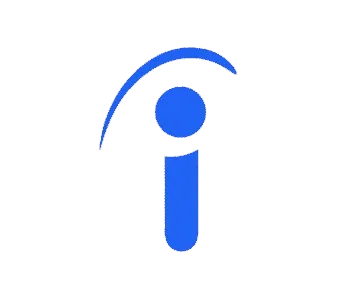Comments
🔺When visitors leave comments on the site we collect the data shown in the comments form, and also the visitor’s IP address and browser user agent string to help spam detection.
🔺An anonymized string created from your email address (also called a hash) may be provided to the Gravatar service to see if you are using it. The Gravatar service privacy policy is available here: https://automattic.com/privacy/. After approval of your comment, your profile picture is visible to the public in the context of your comment.
Media
🔺If you upload images to the website, you should avoid uploading images with embedded location data (EXIF GPS) included. Visitors to the website can download and extract any location data from images on the website.
Cookies
🔺If you leave a comment on our site you may opt-in to saving your name, email address and website in cookies. These are for your convenience so that you do not have to fill in your details again when you leave another comment. These cookies will last for one year.
🔺If you visit our login page, we will set a temporary cookie to determine if your browser accepts cookies. This cookie contains no personal data and is discarded when you close your browser.
🔺When you log in, we will also set up several cookies to save your login information and your screen display choices. Login cookies last for two days, and screen options cookies last for a year. If you select “Remember Me”, your login will persist for two weeks. If you log out of your account, the login cookies will be removed.
🔺If you edit or publish an article, an additional cookie will be saved in your browser. This cookie includes no personal data and simply indicates the post ID of the article you just edited. It expires after 1 day.
Embedded content from other websites
🔺Articles on this site may include embedded content (e.g. videos, images, articles, etc.). Embedded content from other websites behaves in the exact same way as if the visitor has visited the other website.
🔺These websites may collect data about you, use cookies, embed additional third-party tracking, and monitor your interaction with that embedded content, including tracking your interaction with the embedded content if you have an account and are logged in to that website.
How long we retain your data
🔺If you leave a comment, the comment and its metadata are retained indefinitely. This is so we can recognize and approve any follow-up comments automatically instead of holding them in a moderation queue.
🔺For users that register on our website (if any), we also store the personal information they provide in their user profile. All users can see, edit, or delete their personal information at any time (except they cannot change their username). Website administrators can also see and edit that information.
What rights you have over your data
🔺If you have an account on this site, or have left comments, you can request to receive an exported file of the personal data we hold about you, including any data you have provided to us. You can also request that we erase any personal data we hold about you. This does not include any data we are obliged to keep for administrative, legal, or security purposes.
Electrical F.A.Q. & Customer Testimonials
After 3 decades of servicing the buildings of our community, we are bringing
our attention to detail to Your home! Stay Tuned as this division
begins to roll out to your community!
FAQ'S
What is GFCI protection and where do I need it ?
Ground Fault Circuit Interruption is an electrical safety feature required by the NEC (National ElectricCode) in certain areas in and around your home to prevent protentional shock hazards. GFCI protection is required near areas of water and unfinished areas of your home like kitchens, bathrooms, basements,and your home's exterior. GFCI protection devices measure an imbalance between your power and neutral (return path) wires. If it senses an imbalance, the device will trip to prevent the potential of an individual being shocked.
What is AFCI protection and where do I need it ?
Arc Fault Circuit Interruption is an electrical safety device meant to protect the circuit and components from potential fires by sensing arcs of electricity in your wiring or defective devices. These arcs can come from loose connections or damaged wiring and components that you may not realize are compromised. AFCI protection is required on all new circuitry in your home’s dwelling area. A few examples are bedrooms, living rooms, lighting circuits, etc.
I have a light fixture but want a ceiling fan. Can you just replace it for me ?
Ceiling fans and even heavy light fixtures require special ceiling boxes. If your existing ceiling box is not listed, we will replace it when installing your new ceiling fan. Often times it can be accomplished without damage to the ceiling.
I have the old 2 prong outlets. Can you just install 3 prong ones ?
It really depends on your home’s electrical wiring. The majority of 2 prong receptacles are fed by older ungrounded wiring. The simplest solution is to install GFCI protection at the beginning of the circuit which allows the installation of 3 prong receptacles downstream. While this doesn’t necessarily turn your electrical system into a grounded circuit, it is a code compliant method.
My light flicker. What's the cause ?
There are several possibilities why issues like this happen inside your home. It is best to consult a locally licensed electrician to help find and fix your problem.
In our home's knob and tube wiring safe ?
Knob and Tube wiring was the original method of wiring homes built up to around 1930. Although it was a sufficient means to wire a home, that doesn’t mean that 100 years later it is still in proper working condition. The rubber insulation can turn brittle and break leaving exposed wiring in your walls, basement, or attic space. Covering K&T wiring with insulation can cause the wires to overheat and possibly melt as well. Homes originally wired in K&T lacked the electrical demand that we need to run a typical home today. If you live in a home with K&T wiring, please call for an electrical assessment.
Why do my cords fall out of my sockets ?
Over years, your receptacles can lose their ability to retain devices plugged into them. It simply means that it is time to have them replaced. A bad connection can cause an arcing situation that potentially could become a fire hazard if not corrected in a timely manner.
Join Our News Letter
Beavercreek Office
1834 Woods Drive
Beavercreek, OH 45432
Columbus Office
235 East Spring Street
Columbus, OH 43215






